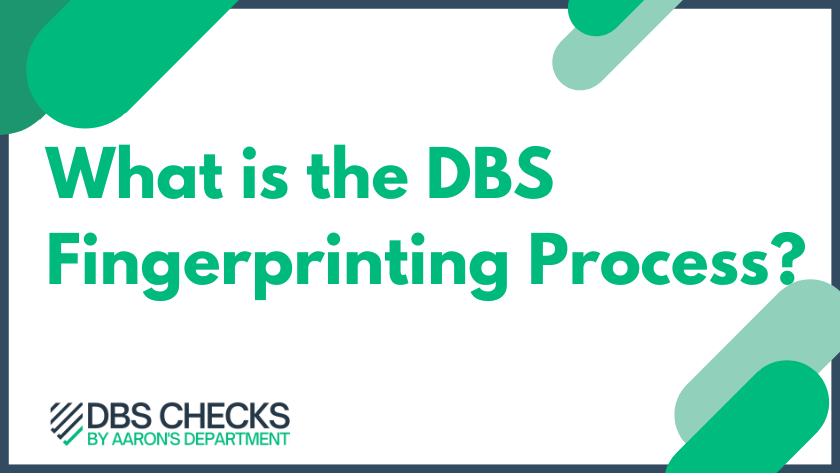When an applicant does not have the documentation required to apply using DBS Routes 1, 2 or 3, they must undergo the DBS fingerprinting process to establish their identity. This involves the applicant going to their local police force’s premises to provide fingerprints. After this is done, the DBS should be able to process the application like normal.
What Are Routes 1, 2, and 3?
Each route simply refers to the set of documents you provide as part of your DBS application process.
DBS Checks – Route 1
The applicant must be able to show from the table below:
- One document from Group 1.
- Plus 2 further documents from either Group 1, or Group 2a or Group 2b.
At least one of the documents must show the current address.
DBS Checks – Route 2
(UK Nationals Only)
If the applicant doesn’t have any of the documents in Group 1, then they must be able to show,
- One document from Group 2a.
- Plus 2 further documents from either Group 2a or 2b.
At least one of the documents must show the current address. The organisation conducting the ID check must then also use an appropriate external ID validation service to check the application.
DBS Checks – Route 3
(UK Nationals Only)
Route 3 can only be used if it’s impossible to process the application through Route 1, and the external ID validation from Route 2 has failed.
For Route 3, the applicant must be able to show:
- A birth certificate issued after the time of birth (UK, Isle of Man and Channel Islands).
- One document from Group 2a.
- 3 further documents from Group 2a or 2b.
At least one of the documents must show the applicant’s current address.


The DBS Fingerprinting Process
If Route 1, 2, and 3 cannot be done, the applicant must fill out a Paper DBS Application Form. The Evidence Checker needs to answer “No” to the “Have you been able to establish the applicant’s true identity?” question. The DBS will then send a fingerprint consent form to the applicant once they receive the application.
After this form is filled out and returned, the DBS will send it to the applicant’s Local Police Force, who will contact the applicant and arrange a time and location to attend fingerprinting.
The fingerprints are then analysed, with the results returned to the DBS, who can now continue with the application.
Are The Fingerprints Kept?
No! The fingerprints are destroyed after analysis, unless required in connection with the investigation of an offence. They are not retained by the DBS or entered onto the Police National Fingerprint Database.
Summary – What Is The DBS Fingerprint Process?
The DBS fingerprint process is done when an applicant cannot go through Routes 1, 2, and 3 for a DBS application. The DBS will inform the applicant’s Local Police Force, who will contact the applicant and arrange a time and location to attend fingerprinting.
If your applicant needs to go through the DBS Fingerprint Process, Aaron’s Department offers Paper DBS Applications. Just get in touch at contact@aaronsdepartment.com and let us know how many you need!
About The Author


John Schofield-Antoncich
John has processed more applications than days he has been alive, and has become the DBS expert. Got a question? He knows the answer!
